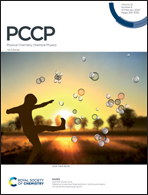Complex magnetic ordering in nanoporous [Co/Pd]5-IrMn multilayers with perpendicular magnetic anisotropy and its impact on magnetization reversal and magnetoresistance
Abstract
We have systematically investigated the magnetization reversal characteristics and magnetoresistance of continuous and nanoporous [Co/Pd]5-IrMn multilayered thin films with perpendicular magnetic anisotropy at different temperatures (4–300 K). For their nanostructuring, porosity was induced by means of deposition onto templates of anodized titania with small (∼30 nm in diameter) homogeneously distributed pores. The magnetization reversal and magnetoresistance of the porous films were found to be closely related to the splitting of the ferromagnetic material into regions with different magnetic properties, in correlation with the complex morphology of the porous system. Independent magnetization reversal is detected for these regions, and is accompanied by its strong impact on the magnetic order in the capping IrMn layer. Electron–magnon scattering is found to be a dominant mechanism of magnetoresistance, determining its almost linear field dependence in a high magnetic field and contributing to its magnetoresistance behavior, similar to magnetization reversal, in a low magnetic field. Partial rotation of IrMn magnetic moments, consistent with the magnetization reversal of the ferromagnet, is proposed as an explanation for the two-state resistance behavior observed in switching between high-resistive and low-resistive values at the magnetization reversal of the porous system studied.
![Graphical abstract: Complex magnetic ordering in nanoporous [Co/Pd]5-IrMn multilayers with perpendicular magnetic anisotropy and its impact on magnetization reversal and magnetoresistance](/en/Image/Get?imageInfo.ImageType=GA&imageInfo.ImageIdentifier.ManuscriptID=C9CP05947D&imageInfo.ImageIdentifier.Year=2020)


 Please wait while we load your content...
Please wait while we load your content...